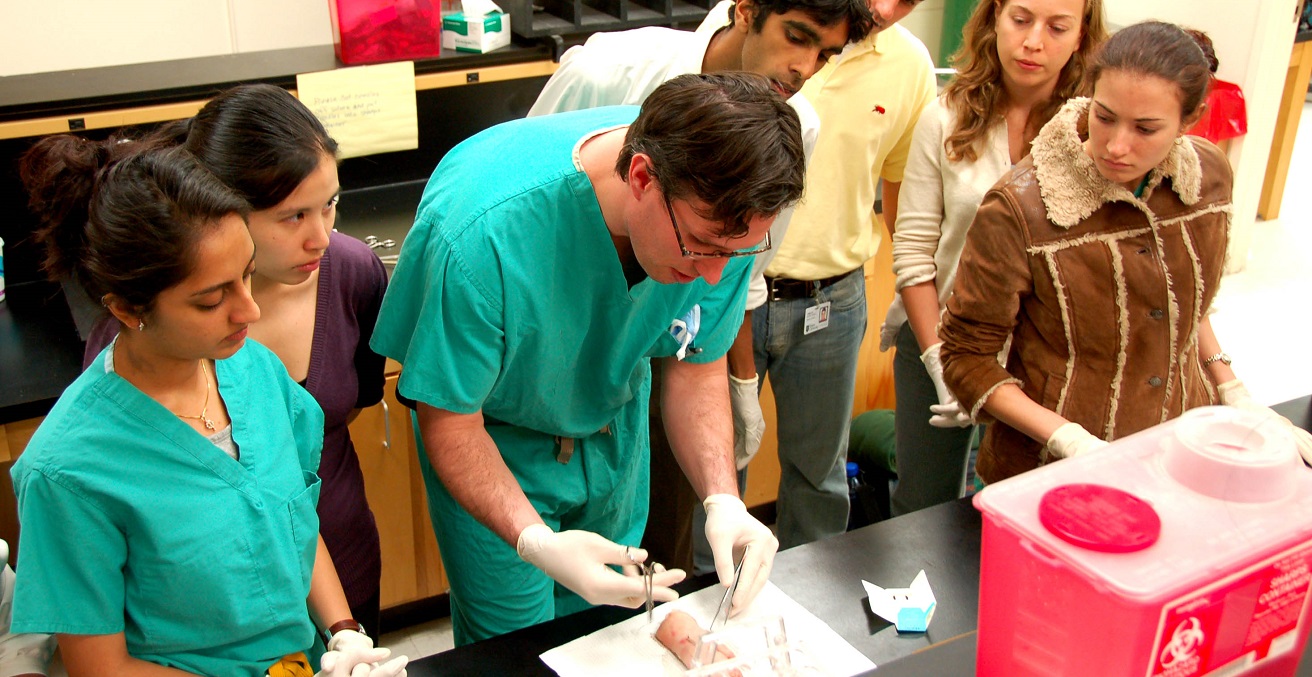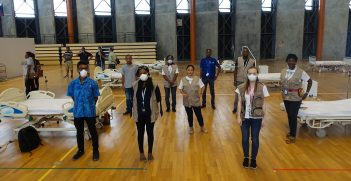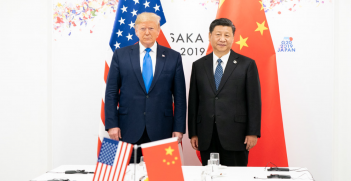Re-Inventing Medical Education in the Digital COVID-19 Era

Since the outbreak of COVID-19, everything about clinical practice and the medical educational system has been turned upside down. Scientific discovery progresses at a rapid pace during times of crisis as new approaches are born from adversity.
Medicine is learned by the bedside and not in the classroom. Let not your concepts of the manifestations of disease come from words heard in the lecture room or read from the book. See, and then reason and compare and control. But see first. – Sir William Osler
From the days of Aesculapius in ancient Greece, a patient-centric apprenticeship model of medical education has been the cornerstone of physician development. In the early 20th century, Sir William Osler personified the ideal medical teacher and his still-relevant wisdom has been handed down through generations. Modern medical education, with its vast knowledge requirement, has expanded to include both didactic and clinical education, but it is through the interactions with patients and their diseases that a physician is born.
Since the 1990’s, the concept of evidence-based medicine (EBM) has provided a framework for applying the most recent scientific discovery to making critical decisions for optimal patient care. Yet medicine is both an art and a science. Academic faculty rely on EBM as the “science” to give learners an understanding of what is known about a clinical entity, as well as how and why the patient should be treated in a certain way, based on clinical trials or best practice guidelines. Knowing which evidence to apply is grounded in the elusive “art of medicine” that is practiced at the bedside, employing all of one’s senses and building upon the strength of the doctor-patient relationship. The COVID-19 pandemic has upset not only the art and science of the modern model of medical education, but has called into question the requisite time to achieve competency, the role of learners on a clinical team, and the very essence of how to educate the next generation of physicians.
Time vs. standards to meet competency requirements
Although the pathway to independent practice as a physician or surgeon varies by country, there are similar standards for knowledge acquisition and supervised clinical experience, followed by some form of licensure. In the United States, after earning a bachelor’s degree, prospective doctors attend four years of medical school followed by three to seven years of residency training. There are similar rigorous pathways in Australia, Canada, the United Kingdom, and other countries. Most medical boards dictate the requisite amount of time to be spent in each stage of training.
The alternate concept of competency-based medical education (CBME) endorses the theory that learners progress toward mastery at varying rates and that their promotion and eventual transition to independent practice should be based on targeted standards rather than a proscribed time period. While this method seems logical, it presents many structural challenges, such as meeting predictable workforce needs and anticipating fiscal demands. Yet, previous global crises, such as World War II and the Vietnam War, have necessitated adaptations to training norms in order to provide a reliable labour pool. With the unpredicted surge in seriously ill patients, COVID-19 has prompted similar adaptations in European Union countries such as Italy and hard-hit areas in the United States.
Are medical trainees a liability during a pandemic?
By their very nature, medical students and residents/registrars are less experienced than fully licensed senior doctors. In teaching hospitals, they are supervised closely in caring for patients. Senior doctors spend a significant amount of time teaching, verifying clinical findings, devising treatment plans, and spending time at the bedside. A typical pattern may be for a medical student to obtain a medical history and perform an initial physical examination, orally present the findings to a more senior physician, discuss the care plan, and spend time learning the best treatment based on the evidence (EBM). The senior physician may then attend to the patient with or without the trainee to validate findings and, together, they finalise the treatment plan.
When the pandemic began, scientific evidence about the disease and a best treatment strategy did not exist. Eager learners wanted a set of rules to follow when evaluating afflicted patients, but their teachers were in “discovery mode” daily, not knowing themselves how the virus wreaked havoc on the human body nor how to treat it. The time needed to teach was supplanted by the need to care for the surge of critically ill patients that overwhelmed hospital resources. A global shortage of personal protective equipment (PPE) contributed to the angst of hospital workers, and ineffective federal leadership fueled fear and despair amongst the US medical community. The fact that wearing a protective mask in society became politicised underscores the difficulty posed to the American public health system.
In an unprecedented move, the Association of American Medical Colleges issued a statement on March 17, 2020 that medical students were to pause all clinical activities immediately. This temporary cessation afforded medical educators an opportunity to plan and adopt creative teaching strategies and preserve scarce PPE for frontline providers, while protecting the health and safety of the students. This granted clinicians more time to provide direct patient care, which they could more efficiently without the need to teach inexperienced learners.
Updated guidelines were released on August 14, 2020 to re-introduce medical students into patient care activities. Of concern were the ethical consideration of exposing resident/registrar learners to dangerous procedures, such as inserting a breathing tube into the trachea of a COVID-19-infected patient. In some hospitals, senior specialist physicians were enlisted to manage all of these procedures, while others argued that these are the very patients that trainees needed to become proficient for independent practice. In addition, the simple practice of donning and doffing PPE requires focused attention to assure that self-contamination does not occur, and even careful disposal or storage for re-use of these items poses a threat to cross-contamination of other healthcare workers and patients. Teaching hospitals did not have the ancillary personnel needed to supervise these and other procedures directed at infection control.
Necessity is the mother of invention
This proverb, adapted from Plato’s Republic, certainly applies to advances in medical education during the time of COVID-19. To foster a sense of community, group educational experiences can continue on platforms such as Zoom, which allow participants to gather in real time from geographically distant locations. Creative educators are delivering their material via Free Open Access Medical Education (FOAMed) using podcasts, blogs, and videos that may be promoted via social media channels and are available to consumers asynchronously and on-demand.
The use of voice or video telemedicine for patient care has expanded greatly during the pandemic and is especially useful for vulnerable populations who do not want to risk exposure to COVID-19 in a healthcare setting. Other uses of technology in telemedicine extend to medical education, where clinical scenarios can be attended by students via computer, thus sparing exposure and preserving PPE. Supervising physicians who may be in quarantine after a known exposure to COVID-19, or who fall into a high-risk group themselves, may be able to use video technology to supervise trainees in the care of patients as well. While we all crave the return of safe social gathering, it is likely that some technology-based education strategies may be as effective as previous standards and can be continued long after the pandemic ends.
The noble profession of medicine has thrived and adapted over millennia. In the 21st century, it is possible to achieve global collaboration with technology, thus enabling information sharing in real time. We are currently developing the “evidence” to guide best practices in treating COVID-19, and this generation of healthcare workers will have participated in elucidating the facts and formulating solutions of an historic global event. Hopefully, their experiences will have a lasting effect on the provision of medical care through a deeper understanding of the human condition as they continue to collaborate with colleagues worldwide and serve as sage mentors for the next generation of doctors.
Dr Wendy C. Coates, MD, FACEP is an Emeritus Professor of Emergency Medicine at the University of California, Los Angeles (UCLA) David Geffen School of Medicine, USA. She specialises in Medical Education Research and Program Development/Leadership as well as clinical practice in Emergency Medicine and Dance Medicine. Twitter: @CoatesMedEd
This article is published under a Creative Commons Licence and may be republished with attribution.




